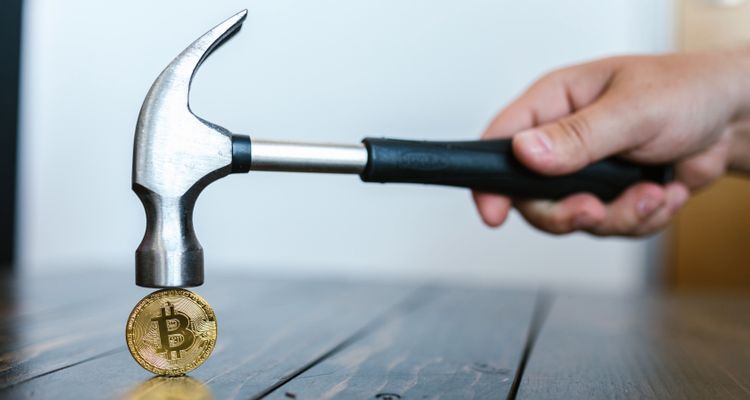Proof of Work? Proof of Stake? You might’ve heard these confusing terms in relation to cryptocurrencies, but what do they mean?
The blockchain technology that underlies all cryptocurrencies can be confusing and, sometimes, intimidating. Different currencies use a variety of terms to describe how they function. In a rapidly-growing crypto industry, it can be hard to keep up with new terminology.
You may have already heard some of this jargon, including proof or consensus mechanisms.
Consensus mechanisms range from basic Proof of Stake to the lesser-known Proof of Burn, but what do they actually mean? Here’s a breakdown of some of these key crypto algorithms to keep you on top of how things work.
1. Proof of Stake (PoS)
Even if you’re a novice in the crypto industry, you’ve probably heard of Proof of Stake, or PoS. This is an integral part of the crypto ecosystem and keeps things safe and secure for users. So, what is it?
Proof of Stake is a consensus mechanism that runs on any given cryptocurrency blockchain. It’s a popular replacement for the Proof of Work mechanism because of its higher energy efficiency. We’ll discuss Proof of Work a little later.
Proof of Stake requires validators (or nodes) to work, and this is where the process of staking comes into play. These validators create new blocks and order transactions within a network, such as Kraken or KuCoin. This ensures that all nodes reach the same consensus within that network. Validators are then rewarded for their work by their chosen staking platform. As a result, the whole process is a win-win situation for both sides.
PoS requires many validators to work, but anyone with a minimum amount of crypto and enough RAM can validate. This means Proof of Stake ensures that a blockchain remains decentralized. A validator creates blocks and checks those which they did not create. This mechanism allows for the network to remain secure, decentralized, and above board.
Also Read: Will The World Be In An Unstable Position Because Of Digital Currency And AI?
2. Proof of Authority (PoSA)
Proof of Authority, or PoSA, is a variant of the Proof of Stake mechanism. However, this kind of mechanism is a little more personal than the former. It requires validators to stake their identity and reputation, instead of their cryptocurrency.
Some consider this mechanism to be better than Proof of Stake because it’s not always certain that validators will work in favor of the network. Some individuals may stake an amount that is insignificant relative to their total crypto holdings. This would mean they wouldn’t be out to lose much if they didn’t perform their role properly.
The Proof of Stake Authority mechanism aims to solve this problem by requiring validators to stake their identity. Validators, therefore, lose their anonymity (which one has in traditional crypto staking). This staking of one’s reputation is more likely to promote only established or committed validators.
This mechanism works well in theory, but huge blockchains like Bitcoin, with thousands of validators, couldn’t adapt it. However, it’s not a bad call for smaller networks to make the switch.
Also Read: Top 5 Cryptocurrency Apps in 2021
3. Proof of Work (PoW)

Proof of Work is another form of consensus mechanism that exists within decentralized networks. It’s commonly used in crypto mining for validating transactions and mining new tokens. So, what does this method involve?
Proof of Work aims to deter malicious and harmful online attacks from cybercriminals. It was developed as a way to tackle the ever-increasing issue of spam emails. Now, it’s used by many popular cryptocurrencies, including Bitcoin.
However, successfully carrying out the Proof of Work mechanism is by no means a small undertaking. It requires a significant number of people to compute complex mathematical tasks, to keep the network safe from attacks. It allows for a network to provide evidence that it has expanded upon its computational power. This stops any form of malicious activity within that network.
But this mechanism is also pretty energy-intensive, and so it’s not exactly eco-friendly. It adds to the huge amount of electricity required to mine crypto coins, a process that is now contributing considerably to climate change. Though this doesn’t mean that the PoW mechanism isn’t a great way to keep networks above board and safe, its environmental cost can’t be ignored.
Also Read: The Best Crypto Wallets in 2021
4. Proof of Activity (PoA)
The Proof of Activity consensus mechanism combines both Proofs of Work and Proof of Stake. It’s only been around since 2014 but has since become pretty popular. Proof of Work and Proof of Stake can only prevent around half of all malicious cyberattacks. But Proof of Activity can provide an extra layer of security to increase this success rate.
PoA can do this because cybercriminals would need control of both the mining hash rate and the number of coins in a decentralized network to carry out an attack. Therefore, a potential attack would require 51% or more of the network’s total mining power and 51% or more of the coins staked in the network. This makes it a lot more difficult for such illegal acts to take place.
5. Proof of Burn (PoB)
You could say that Proof of Burn, or PoB is the most eco-friendly consensus mechanism on this list. It works to tackle the huge energy consumption of networks that use Proof of Work. Unlike PoW mechanisms, PoB uses virtual, not physical, mining facilities, to validate transactions.
The process involves prospective crypto miners starting by burning coins to show proof of their goodwill. This, in turn, allows them to become fully-fledged miners. Mining power increases in correlation with how many coins a miner burns. The mechanism is, therefore, a beneficial process for both the network and the miner.
Blockchains Are Pretty Complex, but It’s Easy to Understand Them Bit by Bit
If you’re wondering how blockchains and decentralized networks actually function, you’re not alone. The terms above can get you started in grasping the intricate processes that cryptocurrencies use. Consensus mechanisms play a role in making these networks as secure and successful as they are.

















